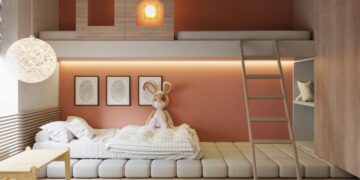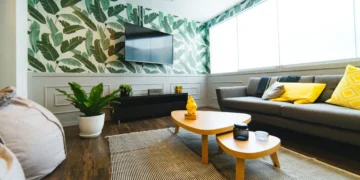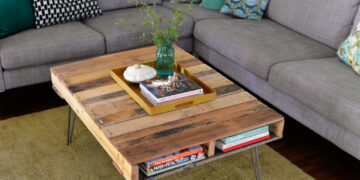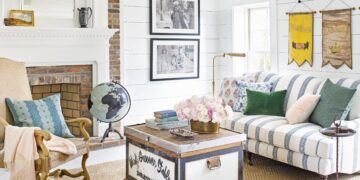You probably have a feeling that you lack the necessary decor to create the ideal bedroom for your child. You are right – and it’s not just because you have been living in an adult-sized guest room. Most adults don’t come with any ideas on how to decorate a child’s room, either. But if you follow these 10 tips, you can create the perfect kid’s bedroom without breaking the bank or hiring a pro. And yes, many of them involve repurposing old items from your own home so that you don’t feel guilty about buying new things for your little one. These tips will also help tone down the baby-y look of your little one’s sanctuary and make it more inviting for older siblings as well as guests.
Hang art instead of buying it
Kids love to decorate their rooms, and they are always on the lookout for interesting objects to adorn their walls, ceilings, and shelves. You can help them do this by hanging their art on the wall yourself. If you don’t have the time or patience to do this, you can always hire a friend or family member to hang it for you. When your child decorates with art, it teaches them about color and design, encourages creativity and expression, and also helps improve their fine motor skills. And it’s so cheap and easy, there’s really no reason not to do it!
Don’t be too precious about your child’s belongings
When you see your child picking up a few things from their grown-up siblings or friends, keep in mind the following: you may be letting your child’s stuff sit around for a long time before someone in the house actually uses it. The stuff you see your kid with may be the only things they have that are of any use to them. This can feel bad, but it’s not your fault. Just remind yourself that your kid doesn’t need all of this stuff, and most importantly, they don’t need it now. It will only be a source of stress and clutter in the future.
Use neutral colors for backgrounds and accents
A lot of toddlers are drawn to bold colors and patterns, but these can often be overwhelming for a small space. Choose softer, more neutral backgrounds for your child’s bedroom, and use accents and wall colors that are brighter. You can also give your child’s room a neutral overhaul every few months so that the colors stay fresh and the space stays welcoming.
Keep the lighting minimal and soft
Lights are often a source of anxiety for young children, whether they are causing a ruckus or causing sleep disruptions. Minimize the amount of lighting in your kid’s room by closing the curtains at night and keeping the lights off while your child is sleeping. Also, install motion-detector light switches where possible.
Match your furniture to the theme of the room
If your child shares a room with a sibling, ensure there is furniture that fits the decor of both rooms. For example, if your child’s room is pink and blue, you can use these colors in your child’s room, but make sure you also use them in your home, such as in your bedding or cushions.
If you have a boy, choose dark furnishings and accessories
If you have a boy, choose dark furnishings along with darker-colored accessories, like a dresser or nightstand. This helps to set a masculine tone in your child’s room, which is especially helpful if your child has a younger brother.
If you have a girl, find light tones for the walls and furniture
If your daughter has a room in your home that is the same color as your son’s room, lighten up the walls and furniture in her room. Choose light colors that are reminiscent of the light in your son’s room, like a light blue wall and a wooden chair.
Give your little one their own space away from the big kids’ chaos
Young children are often drawn to the chaos of their big brothers and sisters, but they also need their own space. Give your little one a small space away from the rest of the family’s chaos, and even a few toys in a corner of their room will help them feel like they have a space of their own.
Conclusion
The best decor for kids rooms is largely dependent on the ages of your child and their friends. If your child is two and two or three years older than their friends, it’s likely you’ll want to keep the decor simple and neutral. If it’s your one-year-old, you can be more creative with colors and patterns. There are a few decor tips for all ages, though, that can help you create the ideal environment for your little one. Keep the lighting low, use neutral colors for backgrounds and accents, hang art instead of buying it, and use a small space as a source of privacy for your child. In addition to these tips, you can also make adjustments to your home that help create a more child-friendly space, like removing sharp edges from furniture or putting a rug in the playroom.














